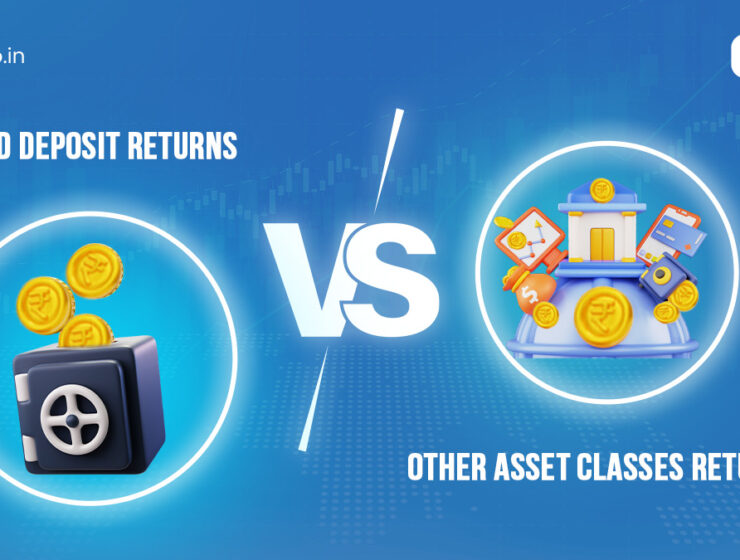

Form 26AS is a consolidated annual statement which has tax credit related information. This statement contains detailed information on tax deducted from the income received by the taxpayer as well as tax paid (challans) in the nature of advance or self-assessment tax. This statement will also contain refund details if any pertaining to the PAN of the taxpayer. This is a very important supporting document which needs to be verified before Income Tax Return Filing. This article will explain the importance and will also explain how to interpret the 26AS statement.
Why the need for Form 26AS?

- It is better known as Tax Credit Statement which sums up every tax credit in the form of TDS and TCS.
- It also displays taxes paid by the taxpayer as “Self- Assessment Tax” and “Advance Tax”
- 26 AS also contains the refund paid out by the Income tax department and hence allows for verification of refunds.
- As this statement combines every tax credit and tax paid as well as refunds paid out to the taxpayer Hence, it facilitates compact supporting document for return filing.
- It also allows convenient and easier return processing.
Every taxpayer considers the TDS certificates as full and final proof for TDS deduction and would continue to file the return of income on the basis of such certificates. However, Form 26AS is conclusive proof of TDS, TCS, and taxes paid. If any TDS certificate is issued manually and such TDS is not shown in Form 26AS then it would mean that the tax deductor has either not paid the TDS to government treasury or has defaulted or wrong filed TDS Return. This would help taxpayers as the Income Tax Department will correlate the data from TDS Returns for Refund processing and if Form 26AS is not considered, it would unnecessarily delay the refunds.
Sometimes the taxpayer may even miss out the incomes (like interest on FD since it accumulates till maturity). In such cases, the Form 26AS will display the TDS deducted by the banks or financial institutions, which needs to be reported in return of income
Understanding Form 26 AS
Form 26AS is divided into 9 sections which are explained as below
- Part A :- Part A of Form 26AS contains TDS details with respect to tax deducted from the income earned or received by the taxpayer. This part will segregate the TDS based on the type of income (head of income) and nature in which it is earned. These subsections are based on sections under which TDS has been booked and deducted and paid to the Treasury of government. So if a taxpayer earns interest income and salary income, then Part A of Form 26AS will be segregated into section 192B (for TDS on salary) and section 194A (for TDS on interest)
- Part A1 :- This part contains the details of the income on which TDS is not deducted as a result of the submission of Form 15G or 15H. When any taxpayer submits Form 15G or 15H, it is considered as evidence which will lead to no TDS on income received by the taxpayer. For e.g. if any taxpayer submits Form 15G or 15H to the bank, then the bank shall not deduct tax under section 194A on interest income received and earned by the taxpayer. Entries appearing herein are the result of TDS return filed by the Tax Deductor. Hence, if there is TDS mismatch (between TDS certificate and Form 26AS) or no TDS (due to non-filing or wrong filing of TDS returns), then the Tax Deductor will have to revise and rectify the TDS return to render appropriate tax credit.
- Part A2 :- This part is specifically dedicated to TDS on sale of immovable property under section 194-IA. This section under Form 26AS requires the buyer to deduct and pay the TDS under section 194-IA on the consideration received on sale of immovable property.
- Part B :-This part holds the details of TCS (Tax Collected at Source) based on PAN of the taxpayer. TCS is applicable on certain goods like Scrap, Alcoholic Liquor etc. In such cases, TCS is collected and paid to the government treasury by the seller (one who receives money) rather than buyer (as in case of TDS). If you sell these goods and are required to collect TCS then this section will have entries for transactions for which you have collected TCs and filed TCS return.
- Part C :- This part will hold the details of taxes paid by the taxpayer in the nature of Self-Assessment Tax and Advance Tax. This section will show the challan details through which the tax was paid by the taxpayer. Challan details will have break up of tax paid (into tax, cess etc.), BSR code, date of deposit, Challan Serial Number etc. which should be filled in the Return of Income as present in Form 26AS.
- Part D : – This part will contain the details of the refund paid to the taxpayer in relation to return of income filed. Refund details will have Assessment year, Mode of Payment, Refund amount, Interest on the refund, date of payment etc. This will help you verify whether you have actually received the refund and if not you can sort it out with the assessing officer.
- Part E: – This part is concerned with AIR (Annual Information Return) transactions based on the PAN of the taxpayer. There are various high-value transactions which are required to be reported in the AIR return by Mutual Fund Companies, banks etc. Such transactions will be traced from AIR returns filed by these Mutual Fund companies etc. based on PAN and will be displayed in Form 26AS.
- Part F : – This part is concerned with TDS on immovable property under section 194-IA but for a buyer of the property. This would mean that entries will appear here only if there has been the sale of immovable property and where the TDS has been deducted and paid to the government treasury by the taxpayer.
- Part G: – This part deals with TDS defaults in the nature of
- Wrong deduction
- Short deduction
- Delayed deposit of TDS
- No deposit of TDS etc.
This part will have details of TDS short payment, interest leviable thereof (due to delay), late filing fees etc. This will not include demands raised by the assessing officer.
We hope that now you must have understood all the components of form 26AS. You may download your form 26AS from the income tax website and file your returns accordingly. Alternatively, if you feel it a little complicated you may get in touch with our Tax experts at Minty who will guide you and make this process easier for you.
A financial planning platform where you can plan all your goals, cash flows, expenses management, etc., which provides you advisory on the go. Unbiased and with uttermost data security, create your Financial Planning without any cost on: http://bit.ly/Robo-Fintoo
Disclaimer: The views shared in blogs are based on personal opinion and does not endorse the company’s views. Investment is a subject matter of solicitation and one should consult a Financial Adviser before making any investment using the app. Making an investment using the app is the sole decision of the investor and the company or any of its communication cannot be held responsible for it.
Related Posts
Stay up-to-date with the latest information.


